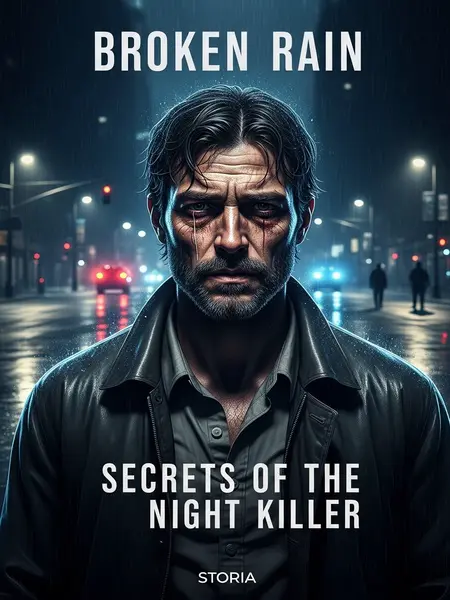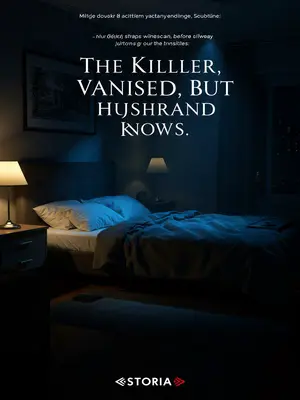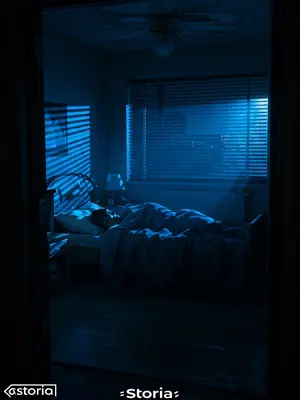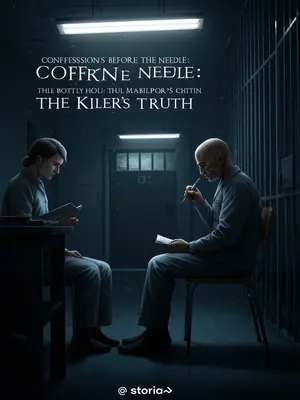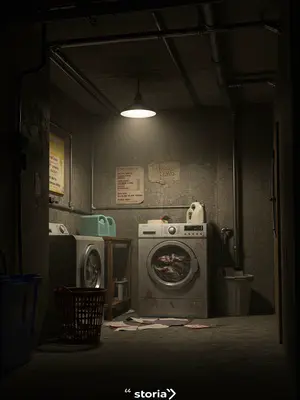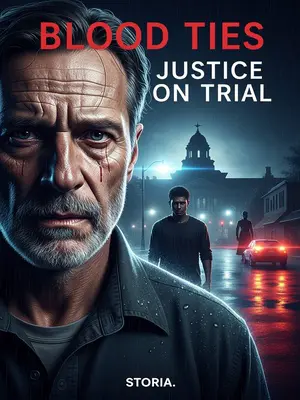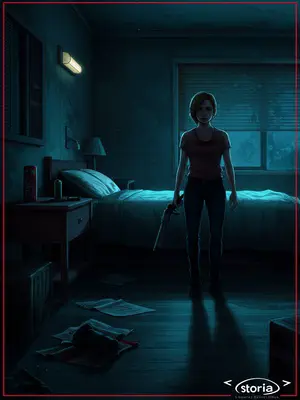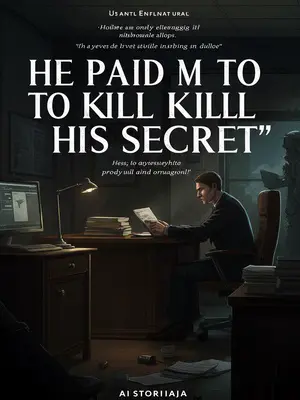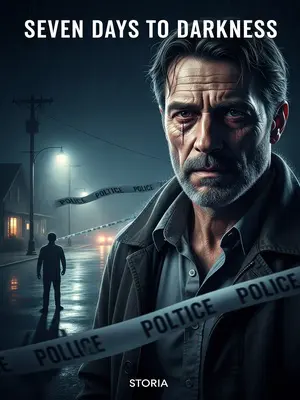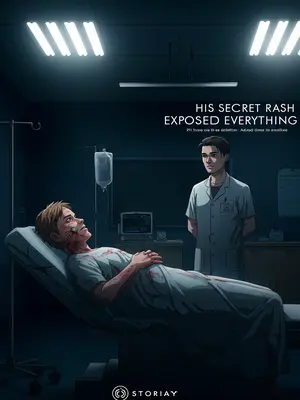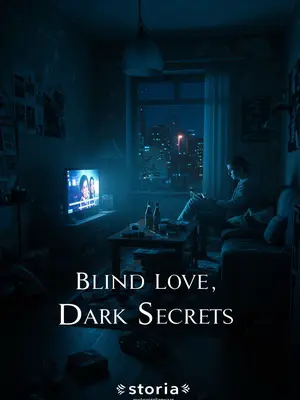Chapter 3: The Echoes of Thunder
I suggested the killer had multiple personalities—one for killing the girls, one for the man. My colleagues thought the second case was too different to be connected. I know, it sounded nuts.
Arguments broke out in the bullpen. Some guys said I was reaching, that I wanted the pattern to fit. But I couldn't shake the feeling that the killer was playing with us, using our own logic against us. Maybe I was.
Especially since the fatal wound on the male victim was a carotid cut from left to right, which meant the killer wasn’t left-handed. The forensics said most wounds were from the left, but the fatal one was a deep right-handed cut. So maybe the killer was a copycat—which was rare.
The ME's diagrams haunted me. One cut—wrong hand. One cut didn't fit the rest. Maybe it was a copycat, maybe it was a slip. Or maybe the killer was showing off—proving he could be anyone, do anything.
My colleagues preferred the copycat theory, so the three cases weren’t linked as a serial. Another thing: it always happened on rainy nights. The alley where the victim walked had blood washed away by the rain. There were no cameras, so we couldn't spot the suspect.
The rain became our enemy. It washed away evidence, blurred the timeline, made everything slippery and uncertain. The city seemed to conspire with the killer, hiding him in the storm.
We seeded new hidden cameras around all three scenes. Serial killers usually like to revisit their crimes. But after a month, nothing. The killer never came back.
Every night, I watched the feeds, my eyes burning. Coffee went cold. Nothing but stray cats and the occasional drunk stumbling home. The killer was either smarter than us or just done playing.
Everyone thought the case had gone cold, but, just as we were about to give up, the fourth case happened, making things even stranger.
I was home, half-asleep, when the call came. Another body, this time in a condo building behind the station. The proximity was a gut punch—close enough to smell our coffee. The killer was taunting us now, daring us to catch him.
After a rainy night, a body showed up in a condo building behind the station. Cause of death, method, timing—all matched the earlier cases, but this time forensics found the girl—no sexual assault. The earlier victims weren't virgins, so it was hard to say for sure, but this meant the killer wasn't after beauty—just driven by pure hatred of women.
The medical examiner was blunt: no sign of sexual assault, no evidence of obsession with appearance. It was as if the killer wanted to make a point—this wasn't about lust, just loathing.
Serial killers usually have triggers. Rainy nights were obviously one. Maybe thunder or lightning set him off. And the body was found right near the station—maybe a challenge. The killer knew we couldn't catch him, so he struck close to home. Or maybe he lived nearby and killed close to home on rainy nights. Call it conditioning.
We drew up maps, plotted the murders on overlays of the city. The line from the station to the apartment building felt like an arrow pointing at us. Some nights, I wondered if the killer was watching from a window, smirking at our confusion. A dare.
Looking at the first three cases, the crime scenes ghosted a straight line from the station to the apartment building. We started internal checks in the department. The profile: a tall man, about 6 feet, left-handed, multiple personalities, sensitive to thunder or rain. Likely a cop or in a special job.
The brass brought in consultants, profilers, anyone who might see what we missed. I remember the tension in the squad room, the side glances, the sense that the killer could be one of us. People started to double-check each other's alibis. Keys stopped jangling when I walked by.
But in the investigation, almost no one matched the left-handed and rain-sensitive profile. Including me, three officers were benched on rainy days and had to account for their whereabouts. For a while, the whole department was on edge, and a lot of people started looking at me funny.
It got to the point where I couldn't walk down the hall without feeling eyes on my back. I kept my head down, did my job. But the whispers grew louder. Trust evaporated, replaced by suspicion and fear. Cleared—on paper.
A week later, we were cleared.
The relief was short-lived. It always is. The chief called us in, told us to get back to work. But the damage was done. The Rainy Night Killer had broken more than just bodies—he'd fractured the department.
The day after the next rain, the fifth murder happened. It was like the killer wanted us to know we were looking at the wrong people, so the body was barely hidden. When we got there, the door was wide open, the smell of blood thick in the air. This time, the victim was a fresh eighteen high school girl, and like the last case, she hadn't been assaulted. He wanted an audience.
The scene was almost theatrical—the open door, the blood, the victim displayed like a warning. The neighbors had heard nothing. The killer moved like a ghost.
We found her blood in an alley nearby, washed away by the rain. Nothing special around—just a car wash and a 7-Eleven. When it rained, mid-afternoon, both places had people, but no one saw anything. The car wash owner said no one came by because of the rain, so the alley was empty. Some seniors went to the store, but there were no tall men around.
We canvassed the area, checked every camera, every receipt. Nothing. The rain had wiped the slate clean. Again. The killer had vanished again.
Still no clues, but the 'cop did it' angle was basically dead. But during the autopsy, the coroner found something new. The girl's body was incomplete; a piece of her neck was missing. No matter how we searched, we couldn't find it.
That missing piece gnawed at me. The coroner was baffled—no sign of why it was taken, no pattern we could see. It felt like a message, but we couldn't read it. It sat on my desk like a riddle.
I figured the missing piece had a purpose. None of the other bodies had parts missing, so something special must have happened. But we knew too little about the killer to follow up. The cases were finally classified as serial killings, kept open with no expiration. But the killer disappeared…
The task force meetings dragged on, the evidence grew cold. Files piled up, dust gathered. The coffee didn’t help. I spent nights staring at the board, willing the pieces to fit. But the killer had vanished as if he'd never existed.
